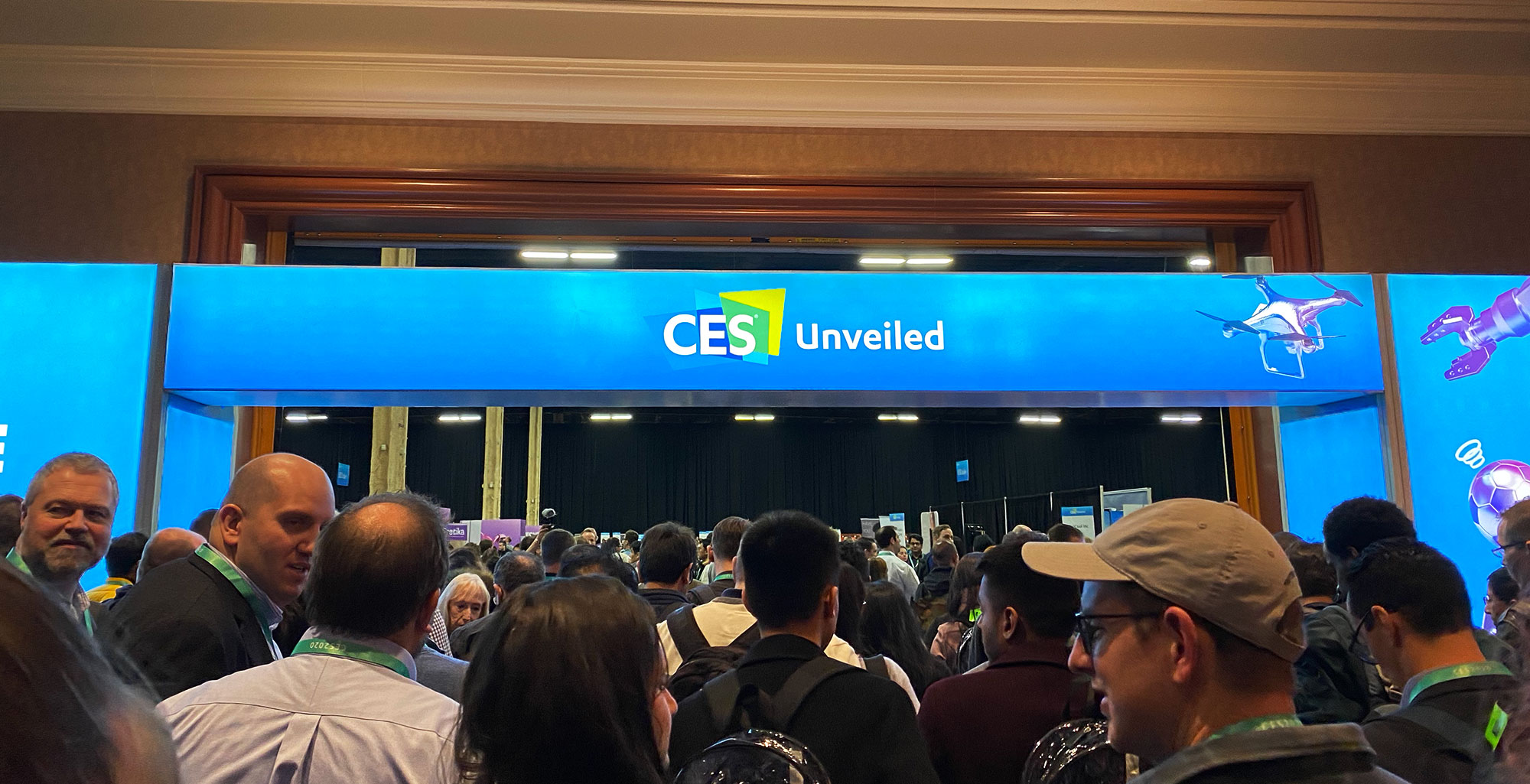The world’s biggest tech show starts this week, but before it does, we’re checking out some of the big news early. From TVs to wearables to making water from air, this is CES Unveiled before the show begins, all in five minutes.
Subscribe to The Wrap at Apple Podcasts…Transcript
For January 5, the day before CES properly begins, you’re listening to The Wrap, Australia’s fastest technology roundup, and we’re live in Las Vegas. If you’ve never heard of CES, it’s the Consumer Electronics Show, what is arguably the world’s biggest technology conference, covering everything from computers to TVs to sound gear to instruments and cars and health gear aplenty.
Basically, if it has a circuit board, there’s a good chance it’s here, and even a few things that don’t. CES is the place to be when you’re talking consumer technology, and even some things that aren’t.
We arrived yesterday, after a long flight from Australia, and while the show is due to begin properly tomorrow on January 6 American time — that’s January 7 back home — the day before CES begins is called CES Unveiled, and is basically a glimpse at some of that great technology coming.
There’ve been a few announcements ahead of CES, particularly in TVs, that have talked up 8K properly for the year. While we saw a few 8K TVs released last year, this year that will become the domain of high-end TVs properly, as both LG and Samsung work with industry bodies to develop a stamp that will let you know if something is either 8K certified or Real 8K. Find one of these, and you have a TV made for an immense amount of pixels.
In fact, some of these TVs will include some features made to wow. Samsung has pre-announced its Q950 QLED TV, which is a bezel-less 8K TV with the colour-honing crystals known as quantum dots. We’re yet to see it in person, but that’s what the next couple of days are for.
Hisense has also launched a new technology called Dual Cell ULED, which aims to take on the dominant organic LED technology known as “OLED” by fixing two layers — a monochrome layer of pixels and a colour layer — together, all to create a more controlled picture.
And there have been a couple of wearables today, from the Suunto 7, a new take on the Google Wear OS smart watch made for durability and GPS-tracked exercise, all the way to one of the more intriguing takes, the Withings ScanWatch. That’s ScanWatch with an “n”.
This is a smartwatch that looks a whole lot like a proper analogue watch, and yet includes some impressive technologies able to alert you if you suffer from some specific conditions. For instance, there’s an electrocardiograph — an ECG — that can pick up on fast, slow, and irregular heart beats, and report that information to your doctor. There’s also a blood oxygen sensor, and it can pick up on oxygen drops while you’re sleeping, which is a sign that you may have sleep apnoea.
It’s very cool, and should cost just under $500 if the Withings ScanWatch gets approval to launch in Australia. That’s an issue, by the way, because while the Series 4 and Series 5 Apple Watch both have an ECG, they’ve never been approved for use in Australia, and so therefore don’t. The same might end up being true for Withings, but we’ll find out as the show goes on, because this sort of technology could be more than game changing, but also life changing.
In fact, some of those life changing ideas showed up at the CES preview event that is CES Unveiled. It’s a bit of a glimpse into some of the stuff we’re going to see and talk about over the coming days.
You may not be aware, but CES covers several halls and hotels, and practically gets journalists walking back and forth across Las Vegas for stories about new products and ideas. CES Unveiled gives us that glimpse of a few things, and some of those were very interesting to say the least.
For instance, health related technologies are getting quite a show, as tech becomes more important in our lives.
We saw the Duolab which can produce skin creams that are specific to individual requirements on daily basis, using an app to work in your skin type in relation to the conditions outside.
Elvie has a wearable breast pump not unlike the Willow model, but the bottle on this one is reusable and the system is pretty quiet.
Lumi is a baby monitoring system that uses a camera and a sensor attached to a baby’s nappies, all to monitor and understand how they’re sleeping.
But the one that really grabbed us is called Source by Zero Mass Water, and it’s effectively a solar panel water maker that uses the power of solar electricity to create water from dry and humid air.
The technology uses hydropanels to capture and distill water, harnessing the power of the sun and air to produce something you could drink. You’d probably get more out of the humid air, but apparently it can be used in dry environments, and it can make a litre of water with ideal conditions in a few hours.
It’s the sort of thing that in a parched country like Australia makes a lot of sense, and having tasted the water, which the system purifies and distills, makes you wonder why we’re not seeing more of this around.
And this is just the start of CES 2020, and we should have more in the coming days. So tune in every day, because we’ll be up recording a Wrap daily. That’s all for today, from Vegas, we’re signing off. See you next time on The Wrap. Take care.





